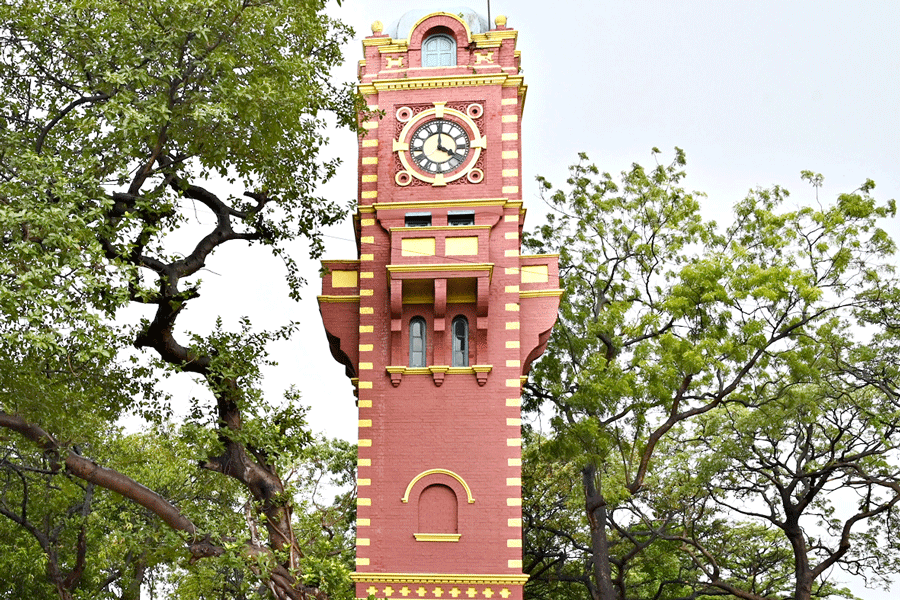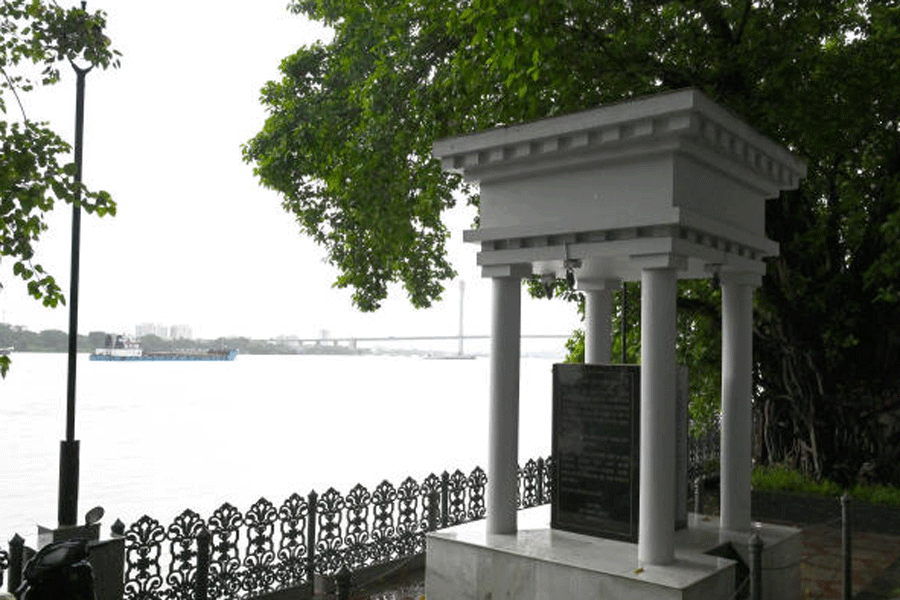A memorial to the forefathers of the modern Indian Diaspora, opened with fanfare on the banks of Hooghly in 2011. It is inaccessible to visitors now.
“You cannot visit anytime. You need a prior permission,” an indenture-history enthusiast was last month told at its gates inside the Kidderpore dock of Kolkata Port Trust.
On July 5, this correspondent, who posed as a visitor, was told the same thing at the gate before a guard directed him to a security office, where an officer did one better than the guard.
“Kya dekhna hai? Ek khamba hai bas (What is there to see? It is just a pole),” he said.
The “khamba” he referred to is the Indenture Memorial, a tribute to hundreds of thousands of Indians who sailed to former British colonies from the docks of Kolkata to work as labourers following the abolition of slavery in 1833-1834.
The first Indians to visit foreign shores in search of livelihood, these labourers were the progenitors of the modern Indian Diaspora, now made up of engineers, teachers and corporate bigwigs.
The countries they went to have built thriving tourism circuits around similar memorials. Here, the apathy towards such memorials is a mirror to how oblivious the city is about slices of history that ought to be treasured.
“The fact that I was not allowed in does not bother me so much. But such a memorial should always be accessible to all. It should be promoted in the best way possible, given its context in the history of Indian people,” G. Pramod Kumar, 58, former adviser to the United Nations Development Programme in Asia-Pacific, told this newspaper.
Kumar, who hails from Kerala, has visited such memorials in Trinidad, Mauritius, South Africa and Fiji.
On June 19, he was turned away from the gate near the double-leafed swing bridge.
Struggling to find the right location, Kumar was relieved to see a signage, pointing to the Indenture Memorial, on the wall outside the gate. The relief was short-lived.
The guard who refused entry pointed him to “another gate” where he was denied the second time.
“At the second gate, I was told that I would have to secure permission from the port authorities. I realised getting it might take more than a day and I left,” said Kumar.
After that, this correspondent and a photographer went to visit the memorial as “history enthusiasts”. They were led to the Port Security Organisation, less than a kilometre away from the gate. Requests at multiple levels failed.
“Only special visitors are allowed with prior permission,” said one officer. For permission, an application had to be sent to the “security adviser, Port Security Organisation”, he said.
“You should ideally apply a few days before the planned visit,” he advised.
The security adviser was not in office.
More than one official cited “security concerns” to justify the curbs.
This correspondent finally called up a senior official of the Kolkata Port Trust, identifying himself by profession and seeking a formal permission to visit the memorial. The permission came within 30 minutes.
A three-minute drive past the gate leads to the memorial, a white structure with inscriptions in English, Hindi and Bengali.
“From Here They Set Forth... This memorial commemorates the thousands of indentured Indian labourers who sailed from Kolkata Port between 1834 and 1920 to lands far away, seeking better livelihoods for themselves and their families...” reads the inscription.
A clock tower stands a stone’s throw from the memorial. Erected by the “Commissioners of the Port of Kolkata” in 1899, the tower helped “ships in transit” to set their time, says an inscription.
“I had a lot of colleagues from Guyana, Trinidad, Fiji, Mauritius and Suriname. People who are of Indian descent but who haven’t seen India. Every society with an indentured Diaspora treasures Indianness. They go back more than 100 years. They struggled and they survived and made it big. All the countries have Indian Arrival Days. It is treated as a very important part of their history,” said Kumar.
“The Aapravasi Ghat in Port Louis, Mauritius, is a Unesco World Heritage Site. You can almost see the footsteps of the labourers. You can see the depot where they were kept for quarantine. It is like a museum,” he added.

A clock tower stands a stone’s throw from the Indenture Memorial. Erected by the “Commissioners of the Port of Calcutta” in 1899, the tower helped “ships in transit” to set their time, says an inscription. Pradip Sanyal
Indentured labour was introduced after the abolition of slavery by the British government in 1833-1834. It was a system of bonded labour, in which able-bodied young people were recruited to work in sugar, cotton and tea plantations and railway projects in British colonies.
From 1834 to 1920, Britain is said to have transported about two million Indian indentured workers to its colonies. Kolkata port was a major departure point for the labourers.
The labourers were mostly recruited from Bihar and the United Provinces of British India. Three administrative divisions — Bengal, Bombay and Madras presidencies — sent a bulk of the recruits.
The voyage was daunting and claimed several lives. One of the most lucid delineations of the journeyof migrant workers can be found in the Sea of Poppies, the first of Amitav Ghosh’s Ibis trilogy. Ibis is the name of the ship that ferries the migrants from Kolkata to Mauritius.
The Indenture Memorial was inaugurated on January 11, 2011 in Kidderpore. The unveiling had been attended by hundreds of people of Indian origin from countries that were the destination of the labourers.
The memorial, located alongside the river Hooghly, had been inaugurated by then Union minister for overseas Indian affairs Vayalar Ravi
On October 7, 2015, another memorial was unveiled on another ghat on the banks of Hooghly, dedicated to labourers to the former Dutch colony of Suriname on the east Atlantic coast. The memorial is in the form of a statue of a couple carrying a sack of belongings each.
Called the Mai Baap statue, it is a replica of the original monument of the same name in Paramaribo, the capital of Suriname.
The Mai Baap statue is also off limits for ordinary visitors.
Sanjoy Mukherjee, the spokesperson for Kolkata Port Trust, said: “Indenture Memorial and Suriname jetty are situated within the port area. At present, the said location may be accessed through port area under prior intimation to SMP Kolkata. However, separate independent access to these places is being worked out.”
SMP refers to Syama Prasad Mookerjee Port, the new name of the more familiar Kolkata Port Trust.
Jayanta Sengupta, historian and former secretary and curator of the Victoria Memorial, advocated “curated tours” of such memorials.
“Ideally, any institution in charge of such monuments and memorials should organise regular awareness campaigns and curated tours.... The role of indentured labour is critical in the history of the Empire in particular and global imperialist history in general. It is also a history of oppression that we must never forget,” he said.
Monuments have in the past been shifted from one place to another. The Black Hole Memorial (that commemorates British officers who died in the siege of Kolkata in 1756) was, for example, shifted from inside Fort William to St John’s Church.
But Sengupta said moving a memorial to indentured labour out of the port was fraught with a risk.
“A memorial to indentured labour in dock lines has a significance because the labourers left their home from these shores. Their journey to servitude began from these places. To take the memorial out of the port and place it in a museum would be akin to decontextualising it,” he said.
